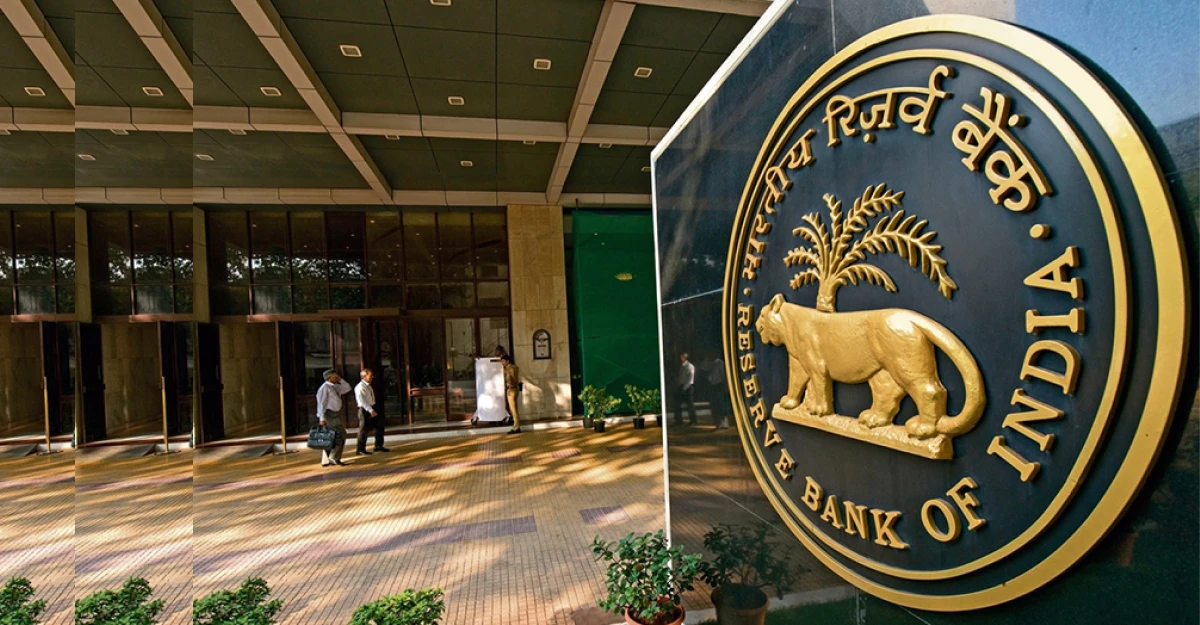Visa vs Rupay vs Mastercard is a never-ending battle in the segment of payment networks. Reason? Because they are the most common payment networks in India for handling different transactions.

As you use your debit card, you’ve probably noticed these logos—RuPay Card, Visa Card, and Mastercard.
Have you wondered how they’re different from each other? Visa and Mastercard operate worldwide, serving as international payment networks, while RuPay takes pride in being India’s very own domestic payment network.
That’s not all, the differences are much more than that!
In this write-up, we will dive into the specifics of these networks, so that you can grasp the differences and make informed choices in your financial endeavors.
Stay tuned!
(A) Why Visa vs RuPay vs Mastercard in the news?
Have you ever wondered why the debate on Visa vs RuPay vs Mastercard suddenly boomed? Due to new regulations by the RBI (Reserve Bank of India).
Earlier, whenever you applied for a debit/credit card in the bank, your card network (Visa/RuPay/MasterCard) was decided by the respective bank. Because the banks already have exclusive agreements with card networks like Visa, RuPay, MasterCard, etc. Based on that, the banks used to select your card network too!
But that won’t be the scenario anymore!
(A.1) RBI’s New Regulation

From 1st October 2023 onwards, RBI has given you the freedom to select your card network! Yes, now you can choose the card network as per your choice.
Let’s go through the two new rules on debit and credit cards that have been stated by RBI and have been in effect since 1st October 2022-
- Issuers are required to provide cards across various card networks.
- Customers who meet the criteria can select their favored card network, either during the card’s issuance or at a later time.
Now you have the choice to opt for a card network irrespective of being a new customer or existing customer. Despite being an existing customer, you can change your card network provider while renewing your debit/credit card.
Sounds great! Isn’t it?
The RBI had already discussed this draft proposal to the card issuer through a circular on July 5, 2023. The card issuers include all the banks and financial institutions.
Now the question arises- Why did the RBI publish new rules regarding card networks all of a sudden?
(A.2) Reasons for implementing new rules
The recent move of RBI aims the following-
- To diversify the options of card networks for customers.
- To break the existing monopoly of the arrangements between the card networks and issuers.
Currently, India hosts five card networks-
- Visa Worldwide Limited
- RuPay (by National Payments Corporation of India)
- MasterCard Asia /Pacific Pte. Ltd,
- American Express Banking Corporation
- Diners Club International Ltd.
Out of these, the top three are the most common card networks used by Indians. Consequently, this gives rise to the question- Which one is better in Visa vs RuPay vs MasterCard? That’s why folks are keen to learn the differences on these three cards!
(B) Synopsis of Visa vs Rupay vs Mastercard
Visa, Rupay, and Mastercard are all popular payment card networks, but there are some key differences between them. Rupay is an Indian domestic debit card, while Visa and Mastercard are international systems of debit and credit cards. Rupay cards are primarily used within India, while Visa and Mastercard are accepted globally.
Now, let’s have a brief overview of these three cards-
| Particulars | Visa | Rupay | Mastercard |
| Industry | Payment Cards Services | Financial and Payment Service System | Financial Services |
| Owner | Visa Inc. | NPCI (National Payments Corporation of India) | Mastercard Inc. |
| Founded | 1958 | 2014 | 1966 |
| Products | Credit Card Debit Card Payment Systems | Credit Card Debit Card Contactless Smart Card Stored-value Card Digital card BharatQR | Credit Cards Debit Cards Payment Systems |
| Areas Served | Worldwide | India | Worldwide |
| Redemption Options | Cashback, travel, merchandise, gift cards, etc. | Cashback, discounts, reward points, etc. | Cashback, travel, merchandise, gift cards, etc. |
In the upcoming sections, we will go through a detailed analysis of Visa vs Rupay vs Mastercard.
(C) Visa vs RuPay vs MasterCard
Go through the following table and you will learn the key differences among them-
| Aspects | Visa | Rupay | Mastercard |
| Global Acceptance & Market Presence | Globally accepted | Mainly used in India | Globally accepted |
| Network Type | International | Domestic | International |
| Processing Time | Higher (Reason: Data sent to the payment network server outside the country) | Comparatively lesser time (Reason: Data processed within the country) | Higher (Reason: Data sent to the payment network server outside the country) |
| Special Features | Extensive travel perks and benefits | Tailored for Indian consumers, offers discounts on various services | Diverse range of card options with specific benefits |
| Merchant Offers | Global network with diverse merchant partnerships | Emphasizes partnerships with Indian merchants, providing localized offers | Wide array of global and local merchant tie-ups |
| Technology Integration | Often adopts newer payment technologies quickly | Adapts to evolving technologies but may have a slower integration pace | Embraces cutting-edge technologies swiftly |
| Transaction Security | Advanced security features | Focused on domestic security measures | Advanced security features |
| Transaction Fees | 1.5% to 2.5% | 0.40% to 0.60% | 1.5% to 2.5% |
| Processing Fees | Quarterly paid by the Indian banks to avail the services from a foreign payment network. | No entry fee or quarterly fee. Other charges are comparatively lesser than Visa and Mastercard | Quarterly paid by the Indian banks to avail the services from a foreign payment network. |
| Prevalence in ATMs | Widely available at ATMs globally | More prevalent in Indian ATMs, expanding internationally | Widely available at ATMs globally |
| Currency Support | Supports multiple currencies | Primarily focused on Indian Rupee transactions | Supports multiple currencies |
| Partnerships and Alliances | Collaborates with a broad range of global financial institutions | Partnerships within the Indian financial ecosystem, including public and private banks | Formed strategic alliances with various financial institutions globally |
However, you must note that the information provided is a generalization, and specific features may vary based on the specific card variant and issuing bank.
Note: We have already covered the case study of Rupay Cards in detail. Visit the article “All About Rupay Cards” for more information.
(D) Which card is better- Visa vs RuPay vs MasterCard?
When deciding between Visa, RuPay, and MasterCard, it really comes down to what suits your individual preferences and needs. You can consider the following things before opting a card in Visa vs RuPay vs MasterCard-
(D.1) Global vs Domestic Use
If you find yourself jet-setting internationally, you might lean towards Visa or MasterCard for their widespread acceptance. However, if your transactions are mainly within India, RuPay’s focus on local use could be more aligned with your needs.
Simply, it means that if your work involves frequent international travel, opting for Visa or MasterCard could be advantageous. For instance, when conducting business meetings abroad, having a card that is widely accepted globally, like Visa, ensures seamless transactions and access to a network of ATMs.
(D.2) Transaction Fees
Take a look at the associated processing fees. RuPay tends to be more cost-effective for local transactions, while Visa and MasterCard may have higher fees, especially if you’re frequently making international transactions.
Suppose you’re a business professional frequently engaging in cross-border transactions. In this case, a RuPay card might be cost-effective for local purchases within India.
On the other hand, if you often make online purchases from international vendors, a Visa or MasterCard may offer a more comprehensive and convenient payment solution, despite potentially higher transaction fees.
(D.3) Speed and Convenience

If speedy local transactions are a priority, RuPay’s local processing might be the way to go. On the other hand, if global transactions are on your agenda, Visa and MasterCard’s international networks could offer added convenience.
Consider a scenario where you need to make urgent local transactions, such as paying bills or purchasing goods. In this case, a RuPay card, with its focus on local processing, ensures quicker transaction speeds, contributing to timely financial activities.
(D.4) Card Features & Perks
Dive into the specific features and perks each card offers. Whether it’s travel benefits, discounts, or rewards, compare them to see which aligns best with your lifestyle.
Imagine you’re a frequent traveler who values airline lounge access and travel rewards. In such a case, Visa or MasterCard, with their diverse travel benefits, could be more appealing. Visa Signature or MasterCard World Elite cards often come with perks like travel insurance, concierge services, and exclusive access to airport lounges.
(D.5) Security
Consider the security measures in place. While all major cards prioritize security, if you prefer transactions confined within national borders, RuPay’s domestic focus might provide an extra layer of comfort.
If you prioritize data security, especially for transactions confined within national borders, a RuPay card might align with your preferences. For instance, if you’re a business owner handling sensitive transactions within India, the localized nature of RuPay transactions minimizes the risk associated with global data handling.
(D.6) Acceptance
Well, it is similar to the first point of global usage vs domestic usage. While opting a card in Visa vs RuPay vs MasterCard, think about where you’ll be using the card most. If global acceptance is crucial, Visa or MasterCard might be your go-to. However, if you’re primarily using the card within India, RuPay is tailored for that purpose.
Suppose you frequently travel for business and need a card accepted globally. In this case, having a Visa or MasterCard ensures that you can make transactions seamlessly in various countries. When attending international conferences or meeting clients abroad, the widespread acceptance of these cards becomes a significant advantage.
(E) Card Examples
The following table describes various credit and debit cards of Visa, Rupay, and MasterCard-
| Card Type | Issuer | Card Name |
| Visa | HDFC Bank | Regalia First |
| Visa | ICICI Bank | Amazon Pay |
| Visa | Axis Bank | Ace Credit Card |
| RuPay | SBI | SBI RuPay |
| RuPay | HDFC Bank | Millennia |
| RuPay | ICICI Bank | Coral |
| MasterCard | HDFC Bank | Regalia |
| MasterCard | Axis Bank | Flipkart Axis |
| MasterCard | ICICI Bank | Platinum |
These are some of the common examples of cards belonging to different card networks.
(F) Final Thoughts on Visa vs RuPay vs MasterCard
When picking between Visa, RuPay, and MasterCard, think about what suits you best. Each card has its own perks – Visa works worldwide, RuPay is for India, and MasterCard has various features. Consider what matters to you, like if you travel a lot or stay local. Visa is good for global stuff, RuPay is more for India, and MasterCard has different features. Understanding these differences helps you choose a card that fits your life well.
It’s like picking the tool that does the job just right – simple and straightforward!

